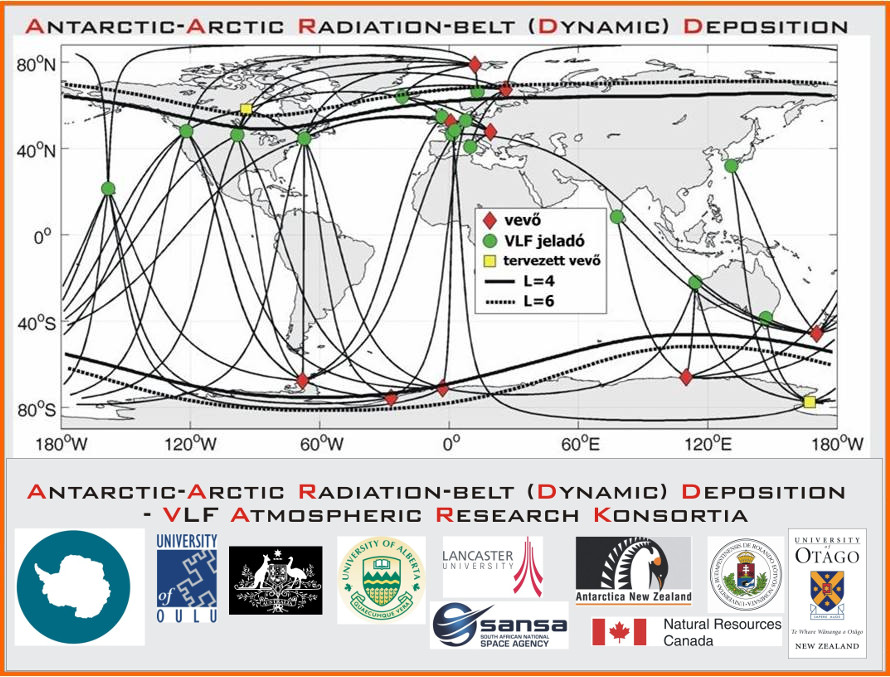Space and ground based ELF-VLF wave experiments
Satellite and on-board programs
Since the mid-1960's, the Space Research group took part in satellite based electromagnetic wave experiments and data collection aimed at understanding the plasma environment of the Earth. The group developed on-board measurement equipment and took part in the scientific interpretation of the records and physical modeling. From the very beginning, electromagnetic phenomena have been studied using ground based records, too, in addition to satellite experiments. The identification and interpretation of phenomena is based mostly on digital signal processing methods and wave propagation models developed in-house. The detailed study of natural and man-made ELF-VLF signals yields essential information on the signal source (generation), the propagation medium (typically anisotropic plasma - magnetised and ionised gas), and the complex interaction between the signal and the medium. The latter leads to a better understanding of physical processed and the range of phenomena collectively labeled space weather, which has in recent years been identified as a top priority field of research.
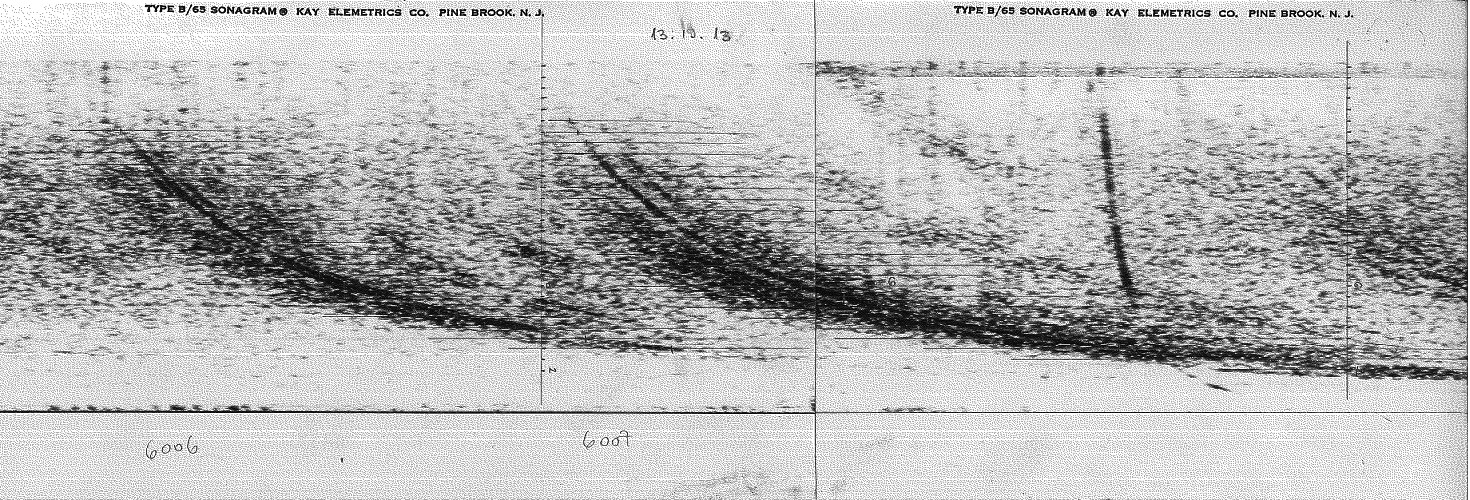
The scientific work of Hungarian space research institutions, multiple successful development projects of onboard electronics (e.g. the first electronic device created in Hungary that flew in space, on the IK-12 satellite in 1975, a micrometeorite detector by developed by Csaba Ferencz at the Technical University of Budapest) proved to be a vital reference. The IK-24 satellite ('Activity'), launched in September 1989, carried an electromagnetic VLF wave experiment, a complete data collection and signal processing unit. This was the first in the sequence of SAS wave experiments. The device operated faultlessly through the operational lifetime of the satellite, and the (this time digital) onboard data were received at Budapest (Technical University) and on Wallops Island (GSFC, USA).

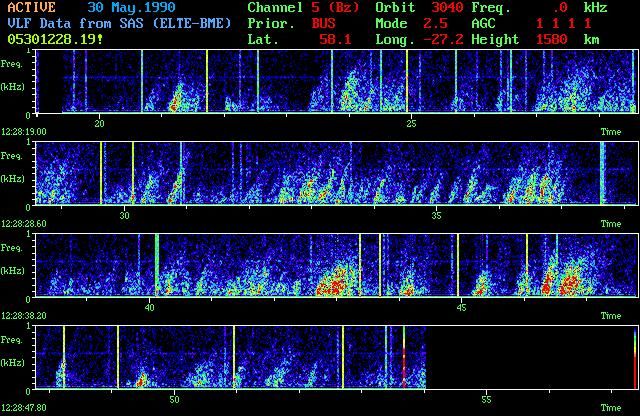 Irregular emission on the broadband VLF records of the SAS1 experiment onboard the IK-24 satellite.
Irregular emission on the broadband VLF records of the SAS1 experiment onboard the IK-24 satellite.
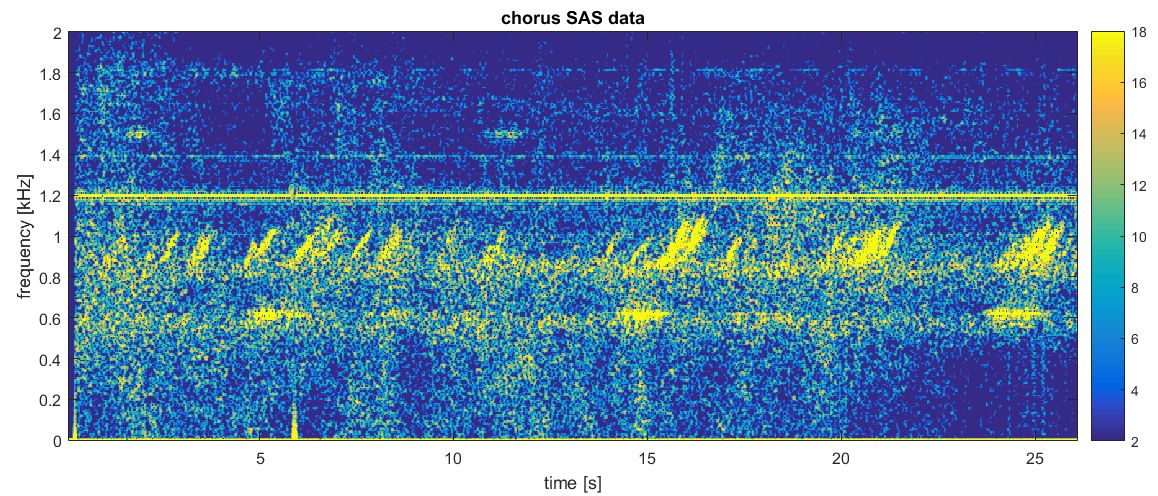
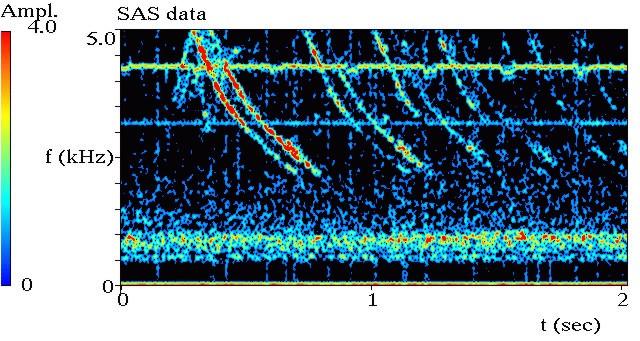
The ELTE Space Research Group took part in the French (CNES) DEMETER satellite program as guest investigators, analysing and interpreting the onboard records. DEMETER was a low-Earth orbit satellite launched in May 2004, registering various parameters of the plasma environment in the upper ionosphere between September 2004 and December 2010. The wave experiment of the satellite recorded full waveforms and spectra of signals propagating in the plasma, from ELF to HF bands using electric and magnetic sensors. The multi-year, almost continuous data set provided great variety of wave phenomena, which for the first time could be analysed for spatial and temporal statistics on a large scale dataset recorded in-situ.
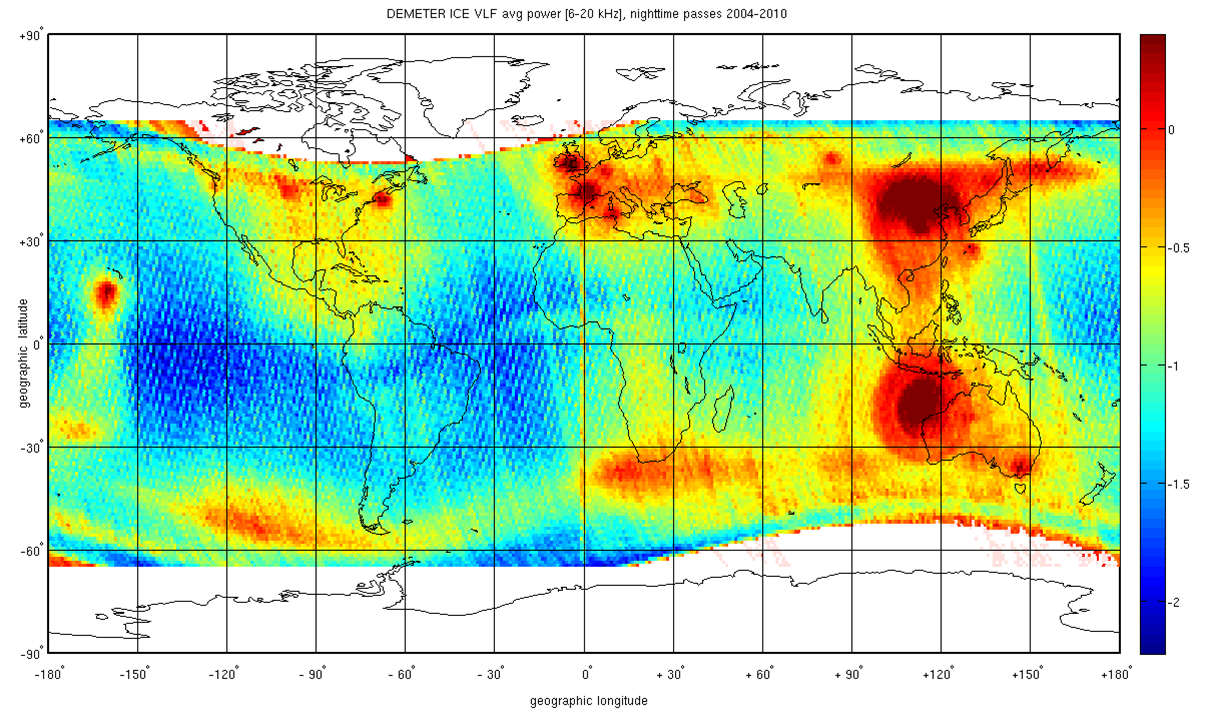
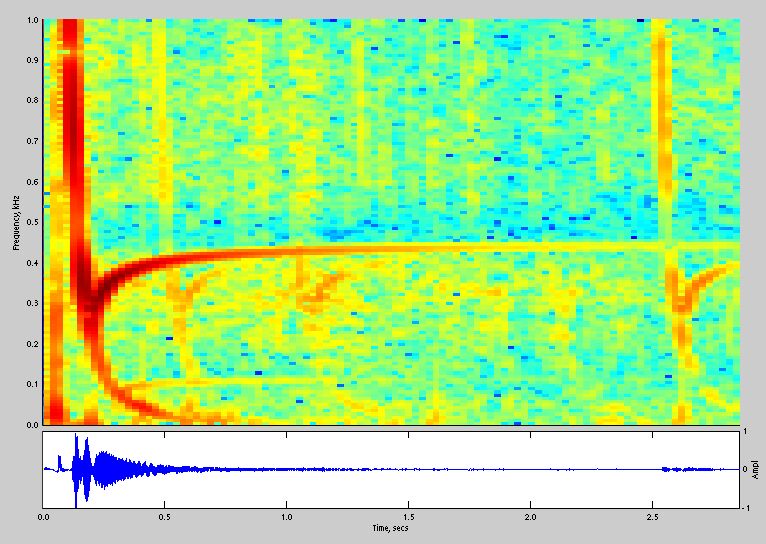
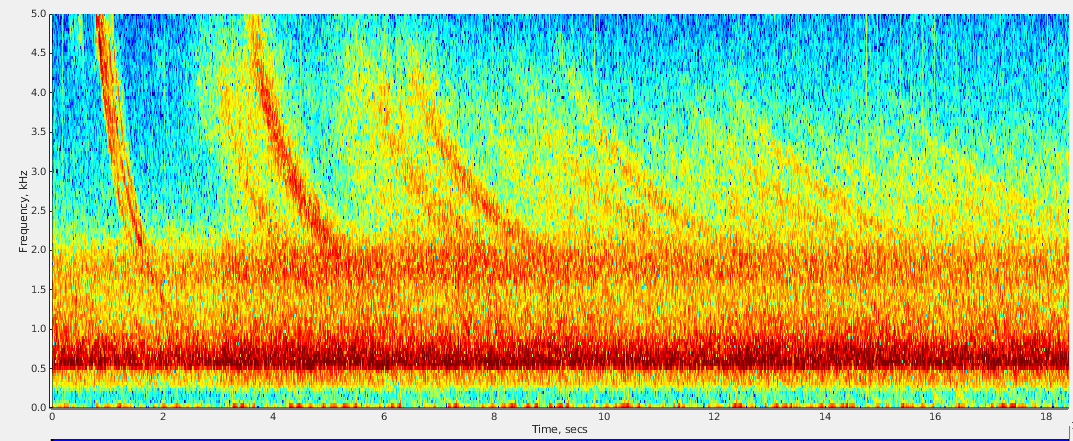
As a continuation of the first, successful SAS experiment, the ELTE Space Research Group and BL-Electronics developed the second unit, called SAS2. The ELF-VLF wave experiment was implemented under the direction of the Russian party (Izmiran), together with Ukrainian, Hungarian and Polish contributors on the Kompas-2 satellite (Complex Orbital Magneto-Plasma Autonomous Small Satellite). The satellite, with the experiment turned on in May 2006, was a repeat of the first Kompas-1 satellite, since that one, after its launch in December 2001, failed to reply to attempted contacts.

After this successful cooperation between the Russian partners at Izmiran and IKI, and the ELTE Space Research Group, the SAS3 wave experiment was invited on the Chibis-M ('chibis' for lapwing and 'M' for lightning), which carried instruments focusing on the complex investigation of the plasma enviroment of Earth and the electromagnetic effects of the global lightning activity. The spacecraft was put on low Earth orbit in spring 2012. the SAS3-Chibis unit, apart from data collection and primary onboard signal processing, contained an autonomous event detector, signal recognition and analysis algorithm (ISDM - Intelligent Signal Detection Module), developed in-house. Using the ISDM, involving predefined signals and groups of signals, allowed a much better use of the limited onboard hardware capabilities (memory, telemetry), focusing on scientifically interesting information, statistical data. The telemetry from Chibis was received on the ground in Kaluga, Tarusa and Panska Ves, and also our own satellite receiver.

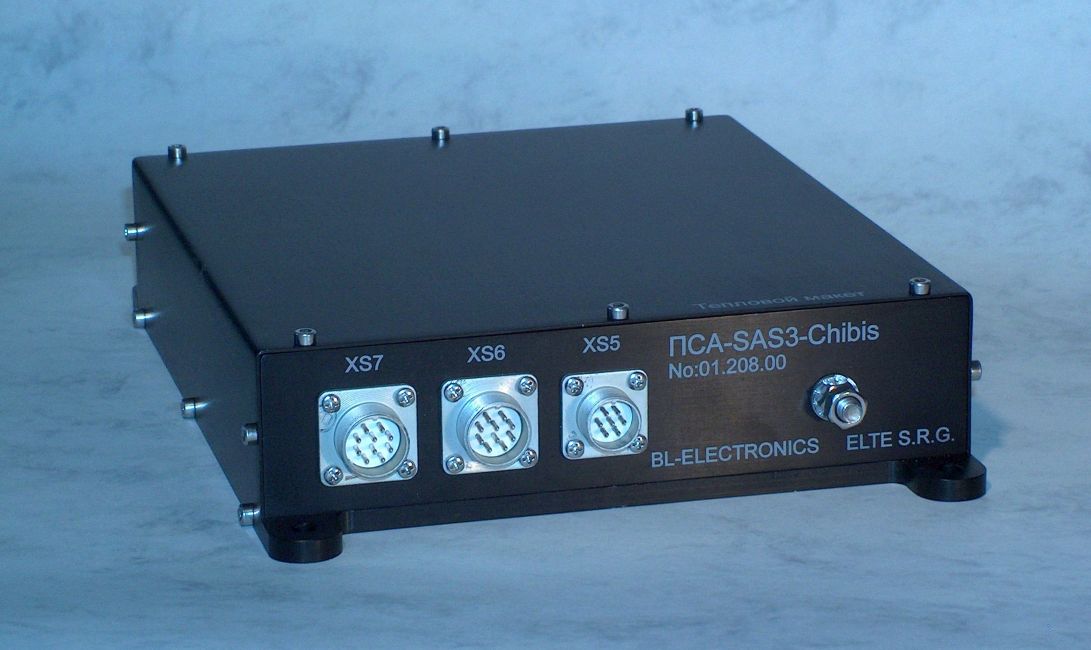
The Russian Relek (Relativistic ELECtrons) - later re-christened to Vernov - satellite, for the monitoring of energetic electrons, was launched on the summer of 2014. The ELF-VLF wave experiment on the satellite was provided by SAS3-Relek, complemented with an advanced version of the ISDM software routine. Relek, after half a year of successful operation suffered a failure of unknown cause. The SAS3 unit operated flawlessly during the complete lifetime of the spacecraft.
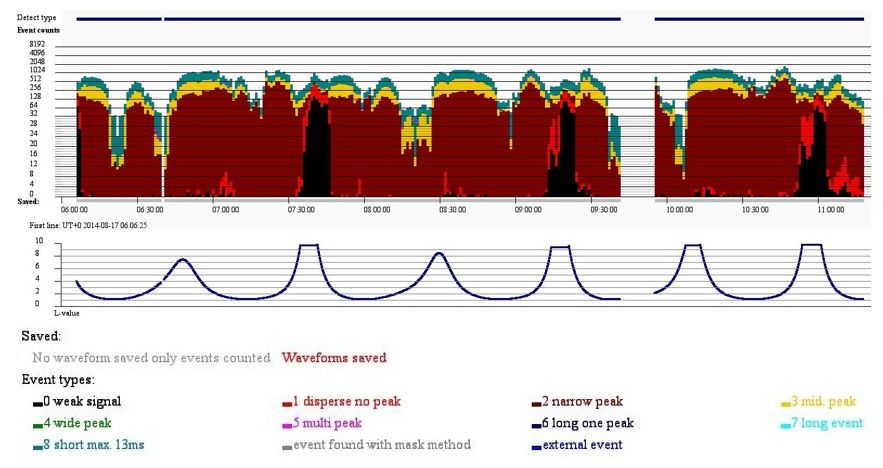
The SAS3-Obstanovka DSP unit,
part of the 'Obstanovka' experiment in the Russian Zarya module of the International Space Station (ISS)
started its operation in 2013. The unit records ELF-VLF wave phenomena in the environment
of the space station.
For this experiment, the ELTE Space Research Group was joined by other Hungarian institutions: Wigner Research Centre for Physics,
SGF Ltd and BL-Electronics.
In addition to recently finished and ongoing space based wave experiments, there are new satellite programs underway.
As a continution, Obstanovka-2 for the ISS was offered, based on a high precision SAS device, focusing on wave propagation
and theory. Chibis-M will be followed by Chibis-AI, already in the advanced stages of planning, with a primary
goal of studying gamma ray bursts related to meteorological storms. Its low frequency electromagnetic
wave experiment will be provided by a SAS3 unit.
The ELTE Space Research Group and BL-Electronics took part in the preparation of the scientific program of the BepiColombo ESA-JAXA space mission to planet Mercure. The mission will include two satellites investigating the magnetosphere of Mercure. The Plasma Wave Instruments (PWI) of the BC MMO satellite includes the ISDM algorithm in its onboard signal processing software, which has already been tested on Earth Observation satellites. BepiColombo, after several years of preparation and delay, launched in Autumn 2018. The scientific programme near Mercure shall start in 2025.
Another space experiment, 'Trabant', will consist of two satellites, studying plasma dynamics and space weather in the equatorial, low latitude ionosphere. The two satellites, similar to Chibis-M, will be launched from the ISS onto a 510 km altitude low orbit. The two units, with controllable separation, will be able to separate spatial and temporal changes of the plasma phenomena. The records of the two satellites, including the complete waveforms from the SAS wave experiments recorded at high sampling frequencies will be downloaded to the ground for later off-line scientific analysis. The unprecedented amount of data transfer will be allowed by never befure utilized extreme broadband telemetry. The definition, specification phase of the Trabant scientific programme has closed, and manufacturing, assembling is under way, until 2023. Launch is expected to happen in 2024-2025. Of any space mission to date, Trabant will contain the largest footprint of scientific and service components developed and manufactured in Hungary.
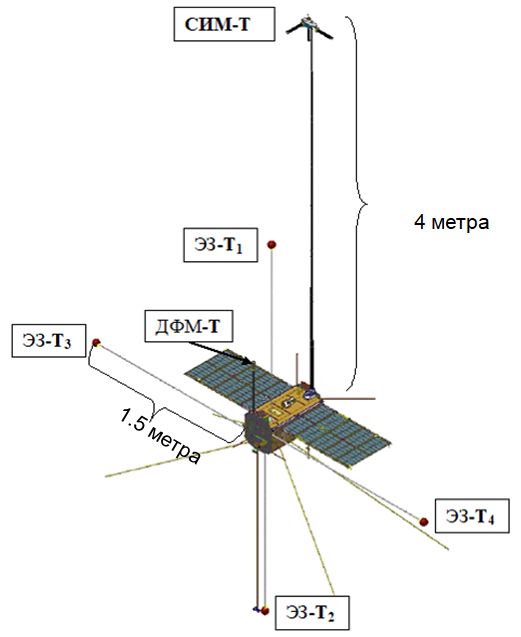
In the framework of an ESA grant, a cubesat feasibility study is currently being carried out under the coordination of the ELTE Space Research Group, with the participation of members of the Hungarian space sector. The study focuses on how to maximize the amount of scientifically useful data using available components at current technological levels, for monitoring Earth's plasma environment. The smallest satellite that can realistically be implemented and that contains relatively few technological and scientific trade-offs, is a 27U cubesat.
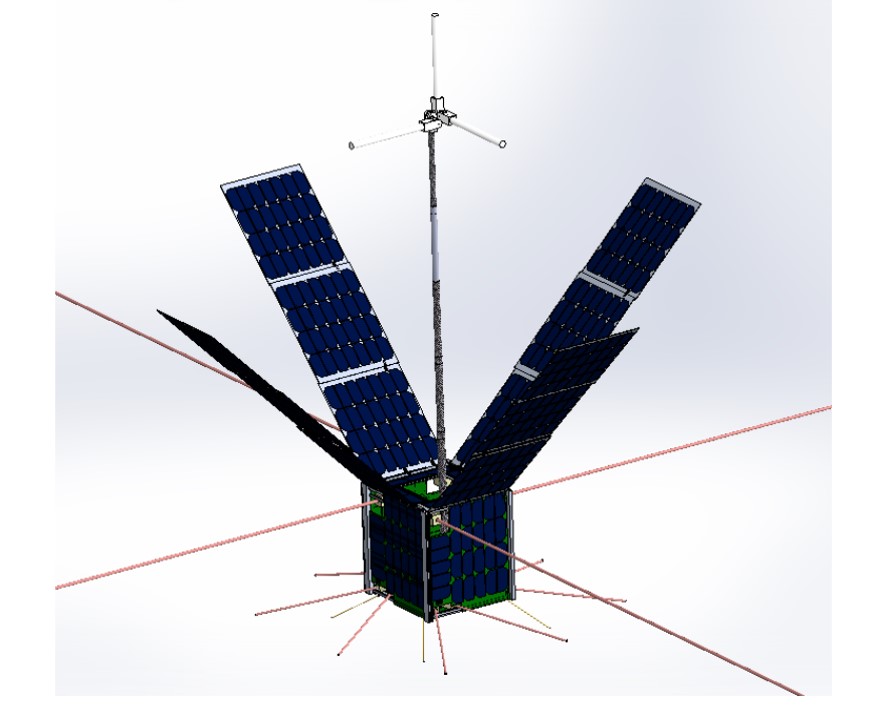
Ground measurements, measurement networks
The first ground based wave measurements at ELTE were carried out by Pál Szemerédy, by installing a whistler receiver antenna at the Tihany Geomagnetic Observatory of ELGI and recording wide-band signals. These VLF measurements can complement satellite experiments, and in some cases provide reference data for those. There have been regular measurements for more than five decades and continuous ELF-VLF measurements for more than two decades at several locations in Hungary. These also form part of a global network in an international cooperation.
The most important of the signals travelling in Earth's magnetosphere (plasma) and entering the atmosphere are whistlers, originating from lightning strokes on the conjugate hemisphere. The analysis and interpretation of whistlers can tell us the parameters of the plasmasphere along the propagation path by means of model inversion. This method is one of the most effective ways of monitoring the plasmasphere. The Space Research Group has been operating a measurement network consisting of several stations, with the goal of investigating the plasma environment of Earth through reception and analysis of VLF signals. Apart from wide-band VLF measurements, some of the locations also carry out narrow-band tracking of VLF navigational transmitters (amplitude and phase information). Perturbations of these signals due to transient ionization provides information on precipitation of relativistic particles from the radiation belts. This phenomenon (the Trimpi-effect) provides direct knowledge on the loss processed of the radiation belts (see space weather studies).
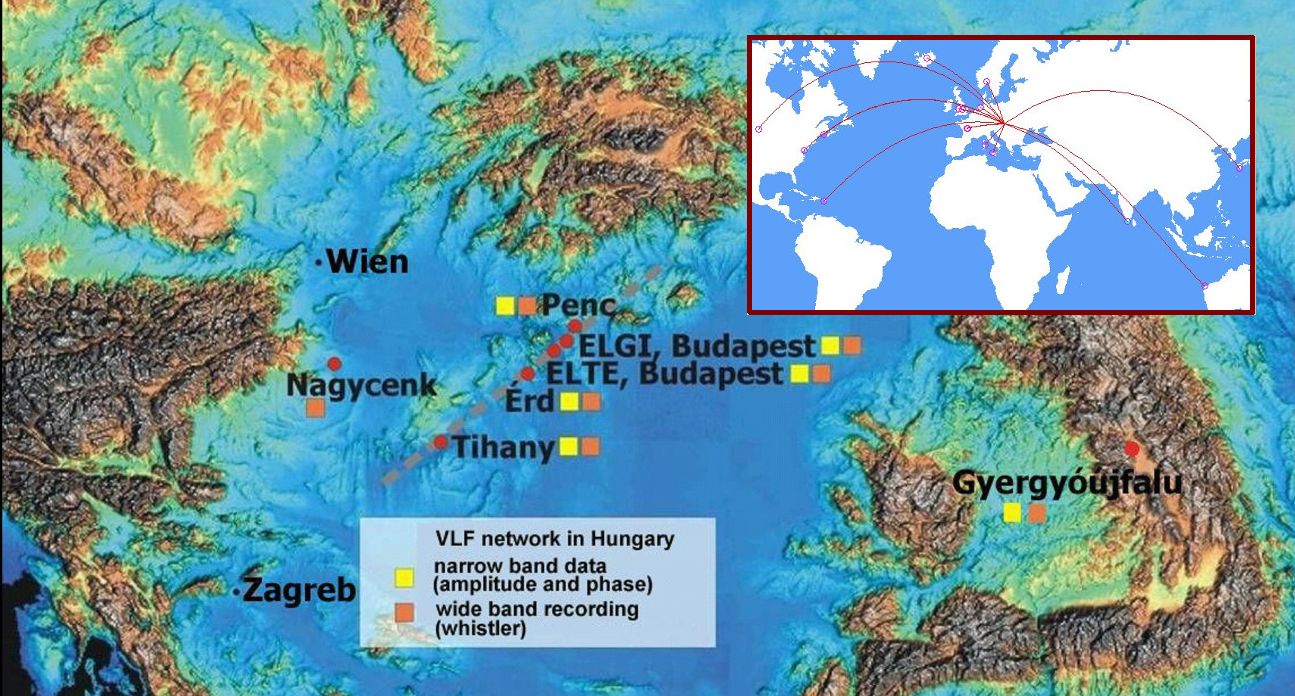
Whistlers can become routine tools for plasmasphere diagnostics when their reliable detection and automatic identification is implemented. As a world first, this was achieved by the ELTE Space Research Group. Our automatic whistler detector algorithm (AWD) is a unique signal processing tool that opened the way for the service-level monitoring of the plasmapshere using VLF whistlers. Based on this capability, an international network of academic and research institutions teamed up to construct a global wide-band VLF measurement network (AWDANet), under the guidance of the ELTE SRG. The stations of the network are not merely receiving VLF signals, but, after passing through a high-level DSP algorithm, they automatically detect and carry out the first level of analyis of signals (automatic whistler analysis, AWA). This yields physical parameters of the medium along the propagation path in the magnetosphere/plasmasphere.

Relativistic particles from the radiation belt precipitating into the atmosphere cause transient ionization in the mesosphere. Through tracking perturbations of VLF transmitter signals, this effect can help us track one of the most important space weather processes, the partial emptying of the radiation belts. The ELTE SRG initiated and is still part of a global monitoring network with this goal. This is the AARDDVARK cooperation, which includes Hungarian narrow-band receivers, too.
